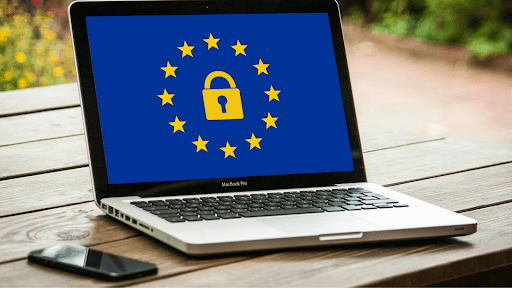
Coronavirus is definitely a tough experience for consumers and retailers alike. At the moment, one-third of the world’s population is under lockdown due to the pandemic and, in this time of isolation, consumers are still browsing online and continuing to absorb content.
>Share this post<
by Irina Ciutaco
April 08, 2020
Coronavirus is definitely a tough experience for consumers and retailers alike. At the moment, one-third of the world’s population is under lockdown due to the pandemic and, in this time of isolation, consumers are still browsing online and continuing to absorb content. A study from Global Web Index shows that 67% are watching more news coverage.
In today’s blog, we will answer questions that may be on the mind of SEO professionals, such as: How Coronavirus has impacted the SEO Metrics of my campaign or Should I change my SEO strategy? Our aim is to provide examples and best practices for improving organic traffic and your digital strategy. We will also discuss which SEO activities are worth spending time on. We have gathered a list of high-profile insights from the first two weeks of March – with most of them coming from the eCommerce fashion and luxury industry. The most important outcome from our analysis related to the SEO topic is that the traffic has dropped in interest and not in rankings.
As a consequence of the Coronavirus crisis, eCommerce has been affected differently across the world – particularly in Europe.
In today’s blog, we will answer questions that may be on the mind of SEO professionals, such as: How Coronavirus has impacted the SEO Metrics of my campaign or Should I change my SEO strategy? Our aim is to provide examples and best practices for improving organic traffic and your digital strategy. We will also discuss which SEO activities are worth spending time on. We have gathered a list of high-profile insights from the first two weeks of March – with most of them coming from the eCommerce fashion and luxury industry. The most important outcome from our analysis related to the SEO topic is that the traffic has dropped in interest and not in rankings.
As a consequence of the Coronavirus crisis, eCommerce has been affected differently across the world – particularly in Europe.
The impact of COVID-19 on eCommerce in Europe
It’s no secret that luxury brands were the most impacted by this unexpected situation. Organic traffic in Continental Europe has dropped as a consequence of the change in consumer behaviour. The most impacted of these changes were the luxury brand websites whose searches dropped considerably.
Italy, as the most severely affected by the virus has suffered the largest drop in online traffic, followed by Spain, France and Germany.
The interest in brand queries dropped in a massive way in Italy after the lockdown was announced. We noticed the same behaviour in UK’s trends for the same period of time – after Boris Johnson, the Prime Minister of the UK gave a speech on national television on their lockdown.
The impact of COVID-19 on eCommerce in China
China, a top market for luxury brands shows reduced signs of recovery for some luxury brands, with ambitious sales rates according to CNBC.com. Nevertheless, there is a lot of uncertainty on how consumers will react in the second trimester of 2020, as suspicions of a second-wave of the virus still persist.
Brand and transactional keywords are struggling, while descriptive and navigational terms show positive traffic numbers.
How to combat falling traffic
1.Improve organic traffic coming to your website by prioritising editorial content. This step is very important as it provides people with more information and navigational pieces, engaging the users in a more effective way.
For example, in Nordstrom’s homepage, we see that the editorial content is accessible from the homepage. As the visibility of the editorial content increases, the organic traffic will increase too.
2.Update the information on your online delivery (specially on size guides) and make sure that it’s accessible and visible on the homepage. This is important to implement because users who were usually making purchases from offline shops are more likely to switch to online shopping.
3.Monitor which products are more searched in this time and renew the homepage banners in order to promote this kind of products. It will most likely be items that suggest indoor activities, as per example games or home products, because almost all the activities are being done indoor now. Boost the content by sharing posts on Social Media.
4.Update information on Meta Tags (especially on Title Tags) to feature delivery capabilities and return options.
5. Promote videos on YouTube with recommendations related to size-charts, deliveries and returns.
2.Update the information on your online delivery (specially on size guides) and make sure that it’s accessible and visible on the homepage. This is important to implement because users who were usually making purchases from offline shops are more likely to switch to online shopping.
3.Monitor which products are more searched in this time and renew the homepage banners in order to promote this kind of products. It will most likely be items that suggest indoor activities, as per example games or home products, because almost all the activities are being done indoor now. Boost the content by sharing posts on Social Media.
4.Update information on Meta Tags (especially on Title Tags) to feature delivery capabilities and return options.
5. Promote videos on YouTube with recommendations related to size-charts, deliveries and returns.
Review of SEO strategy
As we all know, SEO is a long-term process, different from other online marketing channels. If you look back to the 2008 economic crisis, you should think through investing in an SEO strategy right now, while your competitors are not – as this might push the results on Google SERP.
As a consequence of the crisis the SEO Roadmap should change, while the overall strategy shouldn’t fluctuate too much. As we mentioned in the beginning of this blog post, a change in consumer behaviour has recently occurred and most certainly not a drop in rankings.
SEO activities worth focusing on
In order to conduct an effective SEO strategy, you should focus on activities such as technical audits and health checks. You might as well refresh the settings in Google Analytics and update the keywords research – and take into consideration writing editorial content. As emphasized at the beginning of the blog post, now is the best time for people to absorb online content, whether it’s from social media or search engines. While keeping an eye on the SEO strategy, you should also focus on conversion rate optimisation (CRO). You can improve the number of conversions, with the lower traffic available to the website. You should focus on pages that have the highest organic traffic or improve the lower traffic pages that you might be likely to avoid spending attention to.
Use the new schema markup
Last but not least, schema markup is worth implementing as it is one of the most powerful SEO tools available. The great advantage that the schema markup has it’s that it boosts your website in the Search Engine Results Page. A new type of structure data has just been released in order to address the worldwide update on the COVID-19 pandemic. Two new types have appeared: “SpecialAnnouncement” and “eventAttendanceMode”, with the purpose of updating events in Google SERP, while helping the businesses which had to move their activities online. You can check more details here.
Conclusion
To sum up, lots of websites have suffered a great loss of organic traffic, mostly because consumer behaviour has changed. However, on the positive side, companies and brands which are shifting from offline to online will have a lot to gain once this crisis will be over. Implementing changes in the SEO strategy and boosting posts on Social Media are definitely viable solutions.
To sum up, lots of websites have suffered a great loss of organic traffic, mostly because consumer behaviour has changed. However, on the positive side, companies and brands which are shifting from offline to online will have a lot to gain once this crisis will be over. Implementing changes in the SEO strategy and boosting posts on Social Media are definitely viable solutions.
More to explore
In the next few years, we are foreseeing an impressive increase for the global retail industry. While this can be beneficial for the global eCommerce industry, it also means that there will be more competition, as well.
European Data Protection rules were launched back in 2018, to protect the confidentiality of our personal data but even four years later, there is still a lack of understanding among companies and consumers about how to comply with the best practices. Big tech companies, like Google or Amazon, usually refer to the acronym GDPR, to explain the rules that verify the data, so it is not used inappropriately, but to add details to create confusion.



